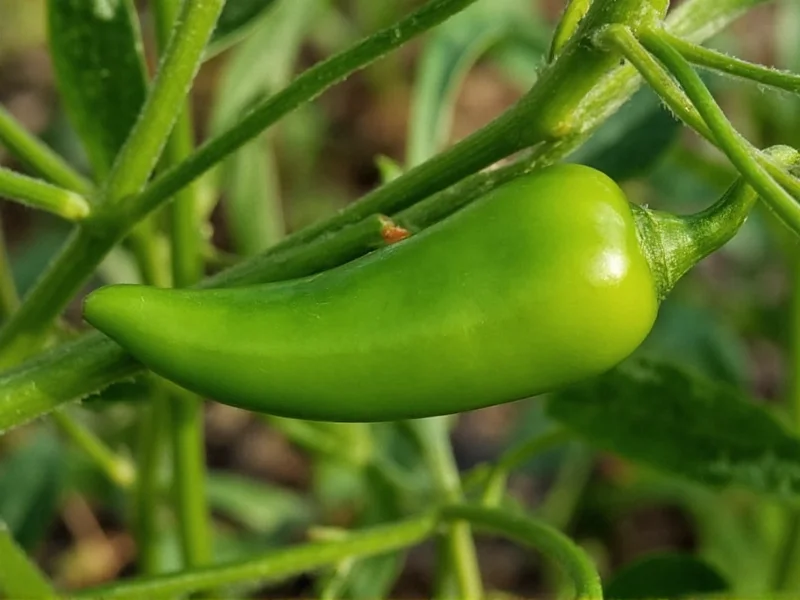Understanding exactly what's the scoville unit of a jalapeno requires recognizing that heat levels can vary significantly based on growing conditions, ripeness, and even individual pepper characteristics. This range makes jalapeños versatile for cooking while remaining approachable for most palates.
Decoding the Scoville Scale for Jalapeños
The Scoville scale measures chili pepper pungency (spiciness or heat) by determining the concentration of capsaicinoids, primarily capsaicin. Developed by pharmacist Wilbur Scoville in 1912, this measurement system remains the standard for quantifying pepper heat today.
When examining jalapeno pepper heat level specifically, it's important to note that:
- The lower end (2,500 SHU) represents milder jalapeños, often younger or grown in cooler conditions
- The upper end (8,000 SHU) indicates hotter specimens, typically more mature peppers or those grown under stress
- Most grocery store jalapeños fall in the 3,000-5,000 SHU range
Why Jalapeños Have a Heat Range Rather Than a Single Value
Unlike some standardized measurements, scoville scale measurement for jalapenos varies due to several factors:
| Factor | Effect on Heat Level | Practical Implication |
|---|---|---|
| Ripeness | Red jalapeños (fully ripe) are typically hotter than green ones | Choose green for milder flavor, red for more heat |
| Growing Conditions | Drought or nutrient stress increases capsaicin production | Same variety can vary by region and season |
| Seeds and Membranes | Most capsaicin concentrates in white pith and seeds | Removing these reduces perceived heat significantly |
| Individual Variation | Natural genetic differences between plants | Two peppers from same plant can differ in heat |
How Jalapeños Compare to Other Common Peppers
Understanding how hot is a jalapeno compared to other peppers provides valuable context for cooking and consumption:
| Pepper Type | Scoville Heat Units | Heat Relative to Jalapeño |
|---|---|---|
| Bell Pepper | 0 SHU | 0x (No heat) |
| Jalapeño | 2,500-8,000 SHU | 1x (Baseline) |
| Serrano | 10,000-23,000 SHU | 2-4x hotter |
| Habanero | 100,000-350,000 SHU | 15-40x hotter |
| Ghost Pepper | 855,000-1,041,427 SHU | 100-400x hotter |
Practical Implications of Jalapeño Heat Levels
Knowing the precise jalapeno scoville units range helps in culinary applications. At 2,500-8,000 SHU, jalapeños deliver noticeable heat without overwhelming other flavors, making them ideal for:
- Salsas and sauces where balanced heat is desired
- Stuffed peppers (like jalapeño poppers)
- Adding subtle heat to soups, stews, and marinades
- Creating homemade hot sauces with predictable heat
Chefs and home cooks can manage jalapeño heat by:
- Removing seeds and white membranes (where most capsaicin resides)
- Using vinegar-based preparations which can neutralize some capsaicin
- Pairing with dairy products (like sour cream or cheese) that counteract heat
- Starting with smaller quantities and adjusting to taste
Measuring Jalapeño Heat: Modern Methods
While the original Scoville Organoleptic Test relied on human tasters diluting pepper extract until heat was undetectable, modern laboratories use High-Performance Liquid Chromatography (HPLC) for precise measurement. This scientific approach provides the exact jalapeno heat measurement guide values we reference today.
When shopping, remember that appearance doesn't always indicate heat level. A wrinkled jalapeño isn't necessarily hotter than a smooth one, and color alone doesn't determine spiciness—though red jalapeños have typically been on the plant longer and may be somewhat hotter.
Handling Jalapeños Safely
When working with jalapeños at their maximum heat potential (8,000 SHU), follow these safety tips:
- Wear gloves to prevent capsaicin transfer to sensitive areas
- Avoid touching your face while handling peppers
- Wash hands thoroughly with soap after preparation
- Use separate cutting boards for peppers to avoid cross-contamination
Frequently Asked Questions
What is the average Scoville unit for a typical grocery store jalapeño?
Most commercially available jalapeños measure between 3,000 and 5,000 Scoville Heat Units. This moderate heat level makes them versatile for various recipes while remaining accessible to most palates. The specific heat can vary based on growing season, region, and even individual pepper characteristics within the same batch.
Why do some jalapeños feel much hotter than others?
Natural variation in capsaicin concentration causes differences in heat perception. Factors include growing conditions (drought stress increases heat), ripeness (red jalapeños are often hotter), and even position on the plant. The concentration of capsaicin is highest in the white pith and seeds, so peppers with more of these internal structures will feel hotter. Two jalapeños from the same plant can differ significantly in heat level.
How does cooking affect jalapeño's Scoville rating?
Cooking doesn't change the actual Scoville rating (capsaicin content remains constant), but it does affect heat perception. Heat can cause capsaicin to distribute more evenly throughout a dish, potentially making the heat more noticeable. Conversely, adding dairy or acidic components during cooking can bind with capsaicin molecules, reducing the perceived heat. Roasting jalapeños can also caramelize sugars that balance the heat, creating a different flavor profile while maintaining the same Scoville measurement.
Can I grow jalapeños with consistent heat levels?
Achieving perfectly consistent heat levels is challenging due to natural biological variation, but you can minimize fluctuations by controlling growing conditions. Provide consistent water (avoiding drought stress), use balanced fertilizers, and harvest at similar maturity stages. Some specialty seed companies offer cultivars bred for more consistent heat, but even these will show some natural variation. For the most predictable results in cooking, consider removing seeds and membranes which contain the highest concentration of capsaicin.
How does the Scoville scale measure something as subjective as heat?
The original Scoville Organoleptic Test relied on human tasters diluting pepper extract until heat was undetectable, making it somewhat subjective. Modern measurements use High-Performance Liquid Chromatography (HPLC) to precisely quantify capsaicinoids, then convert these measurements to Scoville units using a mathematical formula (1 part per million capsaicin = 15 Scoville units). This scientific approach provides objective, reproducible measurements while maintaining compatibility with the traditional Scoville scale that consumers understand.











 浙公网安备
33010002000092号
浙公网安备
33010002000092号 浙B2-20120091-4
浙B2-20120091-4